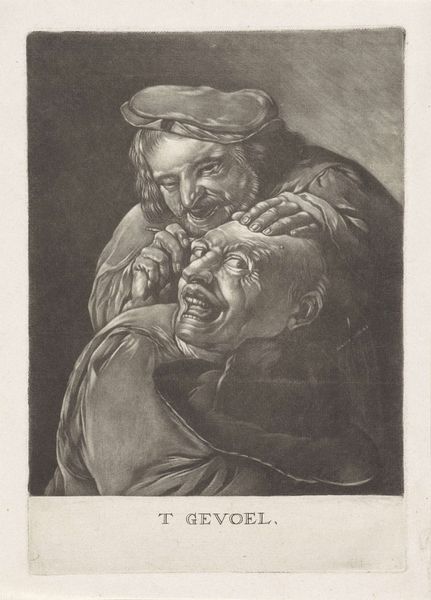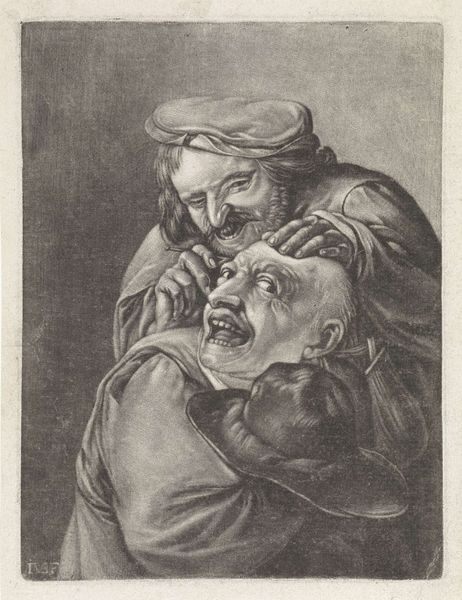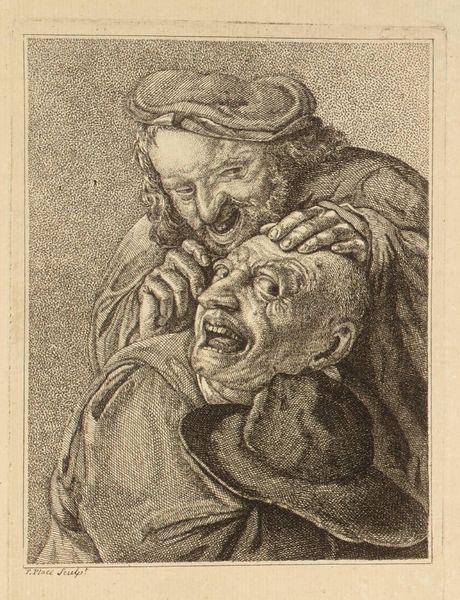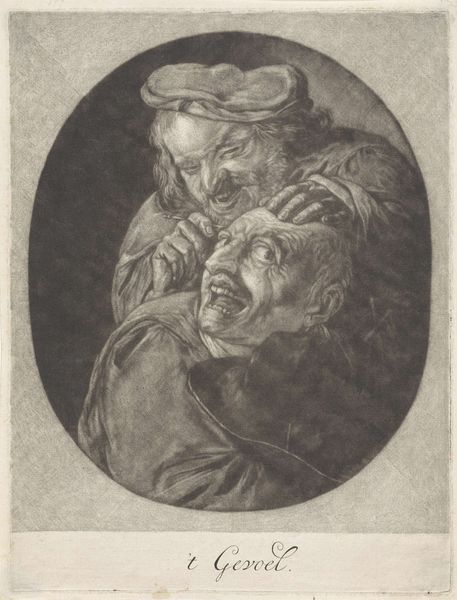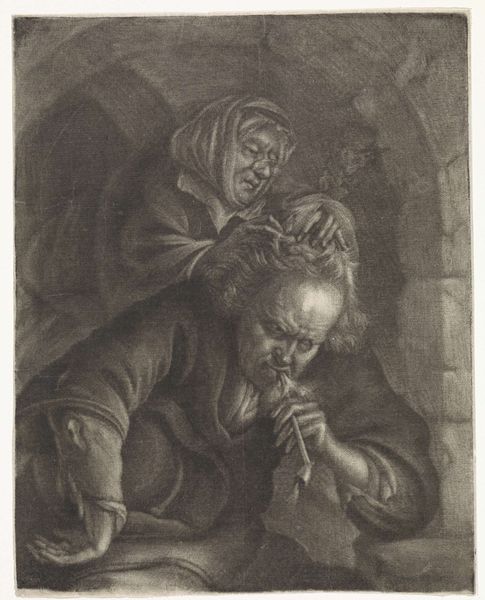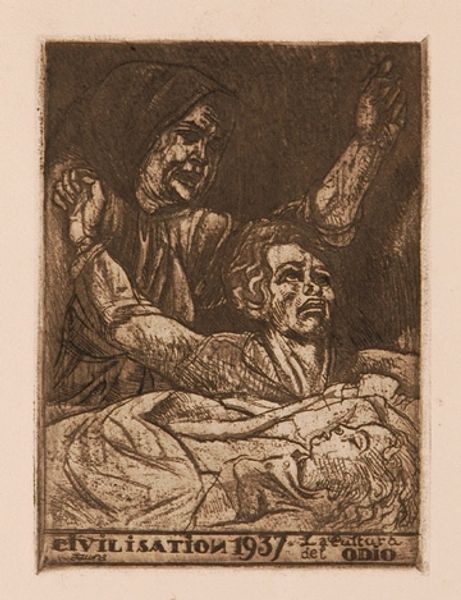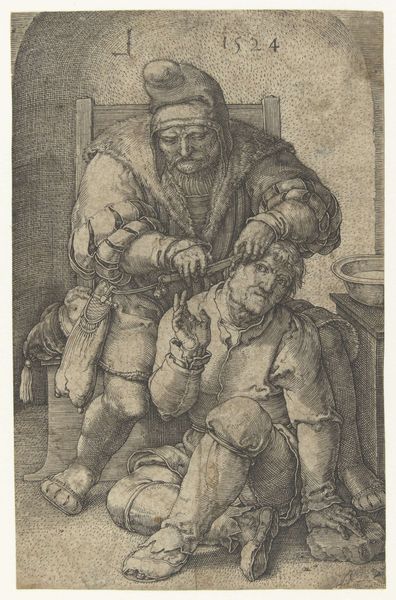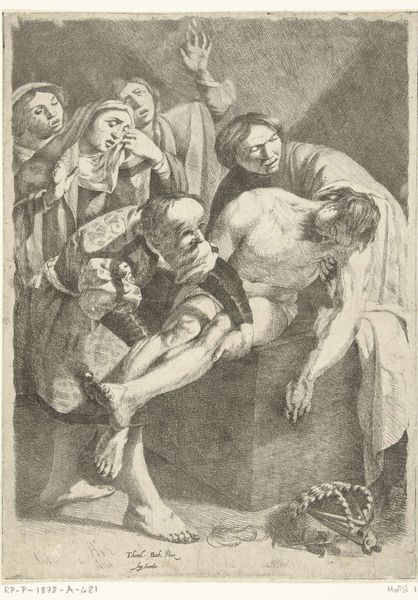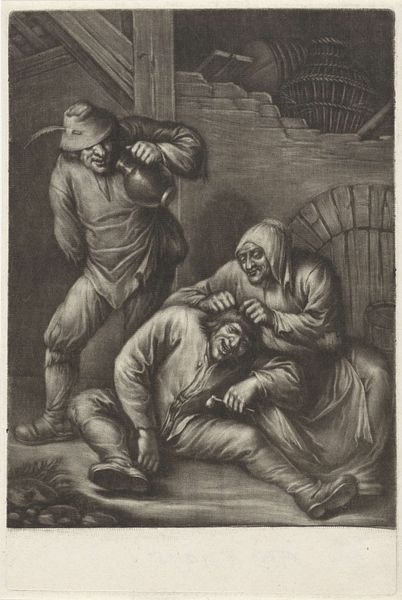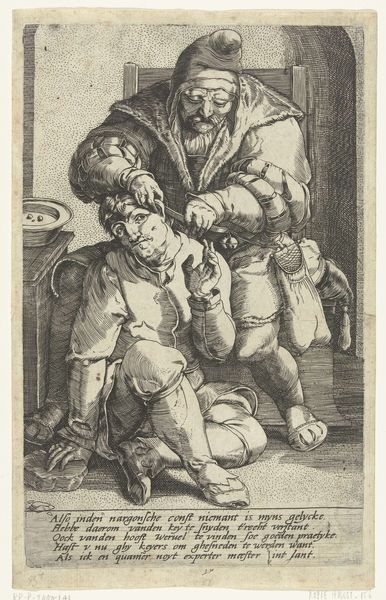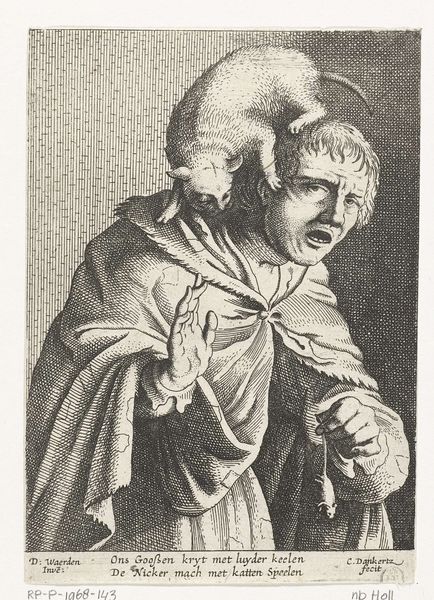
drawing, print, engraving
#
portrait
#
drawing
#
baroque
# print
#
charcoal drawing
#
figuration
#
genre-painting
#
engraving
Dimensions: height 163 mm, width 122 mm
Copyright: Rijks Museum: Open Domain
Editor: So, this is "Keisnijder (het Gevoel)" or "The Stone Cutter (The Feeling)" by Jan Verkolje I, dating from the late 17th century. It’s an engraving, and it’s quite striking! It feels very theatrical, almost like a comedic scene from a play. What do you see in this piece? Curator: Well, immediately I'm drawn to the power dynamics at play. Consider the socio-economic context of the Baroque era. "Keisnijder," or Stone Cutter, refers to a quack surgeon who would supposedly remove "stones of madness" from people's heads. This print isn't just a humorous genre scene, it critiques the exploitation of the vulnerable and gullible. How might contemporary notions of medical consent inform your reading of this piece? Editor: I hadn't thought of it like that, more of a silly scene. So the 'stone cutter' is essentially a con artist preying on people? Is Verkolje commenting on the wider social anxieties of the time? Curator: Exactly! It's a commentary on the period's societal anxieties, the commodification of healthcare, and how those in positions of authority—however dubious—can manipulate others. Look at the expressions. The 'patient' is in clear distress, while the 'surgeon' is almost gleeful. It speaks volumes about who benefits and who suffers within these unbalanced structures, doesn't it? What are your thoughts on how class might influence how we read the dynamic today? Editor: It definitely makes me think about class disparities and access to reliable information, especially considering how easily misinformation spreads even now. I didn't initially see past the surface-level humor, but your reading sheds light on deeper, troubling themes. Curator: That's the beauty of art! It allows us to reflect on not only historical injustices but also contemporary issues of power, exploitation, and inequality. Recognizing these recurring patterns encourages a critical dialogue around ethics, authority, and individual agency, even within fields like modern medicine.
Comments
No comments
Be the first to comment and join the conversation on the ultimate creative platform.
